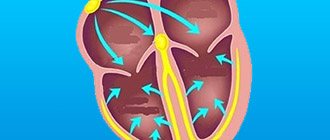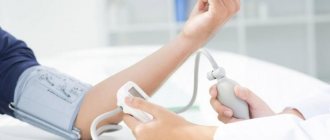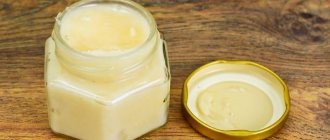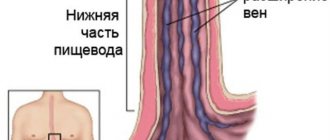A hematoma is an accumulation of blood in the tissues of the human body, and its occurrence is caused by damage due to falls and blows. In some cases, the appearance of a hematoma is not associated with physical effects, but is explained by the presence of a specific disease in a person.
In most situations (this applies to small hematomas), serious consequences do not occur, and the inflammation itself disappears after some time. However, there are often cases that require medical consultation and qualified treatment. Ignoring a bruise can lead to the formation of a cyst or tissue necrosis.
Why it is not recommended to treat a hematoma on the leg at home
If there is large accumulation of blood under the skin, it must be removed. There are enough videos and articles on the Internet describing this procedure at home, but you absolutely cannot follow such advice. Firstly, a person risks damaging his leg even more and disrupting its normal functioning, even to the point of disability. Secondly, and more likely, you can introduce an infection into the body and provoke even greater inflammation. Thirdly, only an experienced doctor using special equipment will do this carefully, but independent attempts can permanently disfigure the skin and leave unaesthetic scars on it.
Why blood vessels burst in the legs: reasons
Fragility of capillaries and small veins can be caused by endogenous (internal) and exogenous (external) factors. In the first case, we are talking about the following reasons:
- Phlebeurysm. Disruption of the valvular apparatus of the veins leads to a change in blood flow: the diameter of the veins increases, they become more tortuous, and their walls become thinner. As a result, there is an increase in the severity of the vascular network, the person complains of a feeling of heaviness and fullness in the lower extremities, swelling and cramps appear. In the later stages of the development of the disease, a violation of the trophism of soft tissues is possible, accompanied by the appearance of dark spots and difficult-to-heal ulcers on the skin.
Expert opinion
One of the first symptoms of varicose veins is the appearance of telangiectasias on the lower extremities - vascular “stars” and “webs” of a reddish, purple or bluish color. If telangiectasias occur, it is recommended to consult a phlebologist and, if necessary, begin treatment. Since they appear at a very early stage of varicose veins, these changes usually respond well to conservative treatment. However, if taking venotonics does not give the desired result, it is possible to remove telangiectasia using minimally invasive surgical methods - for example, laser coagulation or sclerotherapy.
Vascular surgeon, phlebologist
Osipova Ekaterina Yakovlevna
- Endocrine disorders. This primarily concerns diabetes mellitus: if the disease is not treated, diet is not followed, lifestyle changes and blood sugar levels are controlled, diabetes can lead to a number of serious complications, one of which is vascular disorders. In particular, this applies to peripheral capillaries and veins: with diabetes, veins often burst and bruises form on the legs, tissue trophism is disrupted, and poorly healing ulcers can occur.
- Cardiovascular diseases. Any pathology affecting the heart, large veins and arteries automatically affects the condition of small peripheral vessels.
- Pregnancy and lactation. The appearance of spots and bruises on the lower extremities, strengthening of the vascular network, increased capillary fragility - all these are quite common phenomena that accompany the period of bearing a baby and breastfeeding. Most often, their occurrence is triggered by changes in the hormonal balance of a woman’s body, as well as an increase in her body weight.
- Systemic lupus erythematosus. This autoimmune disease is characterized by damage to the microvasculature.
- Hormone replacement therapy and oral contraceptives. Estrogen-containing drugs provoke a decrease in the elasticity of veins and capillaries, increase blood clotting and slow down the speed of blood flow. This is one of the reasons why blood vessels in the legs burst more often in women than in men.
- Taking anticoagulants. One of the complications of therapy using blood thinning drugs is increased fragility of capillaries and small veins. As a result of this, blood vessels burst on the patient’s body (in particular on the lower extremities) and bruises appear.
Expert opinion
If you are taking warfarin, an indirect anticoagulant that blocks blood clotting factors, you need to have your blood tested regularly (about once a month). The results of the study make it possible to quickly change the dose of the drug to prevent the appearance of bruises, subcutaneous hemorrhages and bleeding.
Vascular surgeon, phlebologist
Osipova Ekaterina Yakovlevna
- Allergic reactions. One of the symptoms of allergies is redness of the skin due to the expansion of capillaries and increased permeability of their walls. In particular, their fragility increases - most often the vessels burst on the lower extremities, chest, back and face.
- Smoking and alcohol abuse. Alcohol and nicotine cause an increase in heart rate, increased blood pressure, the release of adrenaline into the blood, provoke blood thickening and impede blood flow. Due to this, the load on the veins gradually increases, leading to their deformation and fragility.
- Overweight and obesity. The higher a person’s body weight, the greater the load placed on the lower limbs. In addition, overweight people are more likely to have hypertension, which causes a decrease in the elasticity of blood vessels.
- Unbalanced nutrition, hypo- and avitaminosis. Insufficient intake of magnesium, potassium, Omega-3 and Omega-6 fatty acids, ascorbic acid, B vitamins, coenzyme Q10 and other substances necessary for the normal functioning of the cardiovascular system leads to fragility of veins and capillaries.
- Elderly age. As the body ages, the permeability of capillary walls may increase, and their elasticity may decrease. This leads to small blood vessels in the lower extremities often bursting in older men and women.
Vessels burst in the legs: causes
Vessels in the legs and arms can burst due to the following exogenous factors:
- Injuries. Bruises, compression, abrasions and other mechanical damage provoke a violation of the integrity of capillaries and veins.
- Exposure to ultraviolet radiation. Prolonged exposure to direct sunlight or in a solarium leads to vasodilation, provoking the development of ultraviolet erythema - a hyperemic, painful and swollen area of the skin. In addition, prolonged UV exposure is accompanied by loss of fluid from the body, which makes the blood thicker and more prone to blood clots.
- Excessive or insufficient physical activity. If a person leads a sedentary lifestyle and moves little, any physical activity is stressful for the body. This also applies to stress on the lower extremities - with prolonged walking, running or standing, the vessels of the lower extremities of an untrained person can expand and burst. The same applies to excessive physical activity in trained athletes.
- Mechanical impact during cosmetic procedures. Acid and mechanical peels, massage, laser hair removal, sugaring, waxing - all this can negatively affect the condition of the vessels of the lower extremities, especially in the presence of concomitant pathologies (for example, varicose veins, diabetes, cardiovascular diseases, etc.)
Treatment of hematoma on the leg
Typically, a hematoma on the leg after a bruise is treated by two methods: conservative and surgical. The first category includes: cold and warm compresses, pressure bandages, taking analgesics, applying ointment, physiotherapeutic manipulations.
The second group involves performing a puncture - surgical removal of accumulated blood from the site of a bruise with the application of a suture and an aseptic bandage.
Treatment of a serious hematoma on the leg must be carried out under the guidance of a doctor; this will speed up the healing process and prevent unpleasant consequences.
Treatment
Modern treatment for the appearance of blue spots and formations of the lower extremities is complex. It involves the use of conservative therapy or surgical intervention, the choice of which is made after the causes of the pathological process have been diagnosed. Conservative therapy includes the use of various medications that improve the functional state of hemostasis, as well as the strength of the walls of venous vessels and microcirculatory structures. Surgical treatment is carried out to remove vessels with irreversible changes in their walls.
If blue spots appear systematically for no apparent reason, you should consult a phlebologist (a medical specialist who deals with the problems of vein diseases), who will prescribe additional research and appropriate treatment.
Top 10 ways to quickly get rid of a bruise
Slipped, fell - bruise! This situation is familiar to everyone. In the crazy pace of life, this is a common phenomenon that you often don’t even pay attention to... Until a blue-green spot with swelling appears in a visible place: the face, knee or arm. In addition to aesthetic inconveniences, a hematoma causes painful sensations that you want to get rid of as quickly as possible. Of course, it will go away on its own in a few days. But what if you don’t have time to wait for the “problem” to resolve? Read our review to learn how to get rid of a bruise faster or prevent its appearance altogether!
During an impact (squeezing, bruising, etc.), small vessels instantly rupture, which leads to local hemorrhage - accumulation of blood under the skin. Bruising and a blue tint become noticeable within a couple of hours. As for the face, after a blow, large swelling initially appears, and bruises appear only the next day.
Conventionally, the formation of a bruise is divided into 2 stages:
- Immediately after the impact, a bluish-red hematoma is visible. Its size depends on the volume of hemorrhage (the strength and area of the bruise). This stage lasts on average 1-3 days. At this stage, the use of warm compresses is contraindicated. You can reduce the hematoma by applying cold.
- Next, the breakdown of hemoglobin occurs, which has accumulated in the area of impact and rupture of blood vessels. What does this mean in practice? That the bruise changes color from blue-red to yellowish-brown. If it is not treated in any way, the problem will resolve itself no earlier than after 7 days.
THE NOTE! Bruises are much more noticeable in girls than in men. This is due to thinner and more delicate skin, as well as female sex hormones - estrogens, which increase the permeability of the walls of blood vessels. To reduce capillary fragility and vascular permeability, it is recommended to take vascular strengthening agents (as prescribed by a doctor).
It so happens that with a relatively equal severity of injury, some girls get only a small bruise, while others have a “world-scale” hematoma of a bright bluish color. It's all about poor blood clotting and fragility of blood vessels due to vitamin deficiency. Namely, a lack of vital vitamins C and K! If we talk about vitamin C, it is responsible for strengthening vascular walls and stimulating skin regeneration. If the body is critically lacking it, a bruise can be expected even from a slight blow to the corner of an office table. In such cases, doctors recommend taking a course of ascorbic acid and prescribe a diet based on foods high in vitamin C: pineapples, lemons, oranges, kiwi, sauerkraut, etc.
IMPORTANT! Do not overuse vitamin C in large quantities. This can lead to kidney stones and skin rashes.
Often girls complain of dark circles under their eyes as a result of long hours of work at the computer and chronic lack of sleep. These are the so-called “dark circles” and “bags” under the eyes. You can get rid of this problem by optimizing the “sleep and wakefulness” regime and using folk remedies that reduce manifestations.
Handy remedies to get rid of bruises and dark circles under the eyes:
- Parsley mask (grind 5 grams of parsley roots in a blender). You can apply the mixture under your eyes for 10 minutes, or make “cosmetic ice” out of it and wipe the problem area with cubes in the morning.
- "Black + green tea." Pour hot black tea into one bowl. Cold green - to the other. Make lotions with cotton pads for 5 minutes, alternately wetting them in each type of tea.
- Grate the peeled potatoes on a fine grater and wrap in cheesecloth. Apply the mixture to your eyes for 10 minutes.
What to do if you get hurt and don’t want a bruise to appear?
- First, apply ice or a cold compress to the area of the impact as quickly as possible. Use whatever you have on hand: frozen vegetables or chilled chicken from the refrigerator. The main thing is to wrap them in cloth and control the process so as not to get frostbite instead of a bruise. Keep it cold for about 20 minutes, and then after a short break, apply the compress again.
- Secondly, if more than 10 minutes have passed since the impact, cold alone will no longer have an effect. “Heparin ointment” will come to the rescue, which is applied in between applying cold.
- Thirdly, it is worth excluding any contact of the bruised site with heat - it will only increase swelling.
Vinegar (9%). Every housewife has it at hand. In order for a kitchen remedy to cope with a bruise, you need to mix 250 g of it with 5 g of table salt. A disc soaked in the resulting solution must be applied to the site of the bruise.
Calendula. Tincture from the plant is sold in pharmacies. It is used in the form of compresses and lotions.
Rosemary oil. The natural properties of rosemary are ideal for eliminating bruises.
Garlic tincture. It is necessary to mix two heads of garlic (pre-grated) with 500 ml of vinegar (5%). The mixture should stand for a day, after which the infusion can be used to wipe the hematoma.
Aloe. Do you have an aloe bush growing on your window? Tear off a fresh leaf, cut it lengthwise and apply it to the bruise site. This method works great if the bruise is small.
A pineapple. To make bruises disappear quickly, use a piece of tropical fruit. It must be applied to the problem area.
"Beets + honey." The beets need to be grated and mixed with a tablespoon of honey. This paste is applied to the hematoma and kept under a bandage every day for 2 hours.
Cabbage leaf. A compress is made from it, which perfectly resolves bruises. The sheet must first be beaten with a kitchen hammer.
Iodine. You can make an iodine mesh directly on the bruise (only 2-3 days after the injury).
Onion. There are 2 finely chopped onions per tablespoon of salt. Apply the paste 3 times a day for the entire life of the hematoma (not recommended for use on the face).
- 6-8 days on the face: on the forehead, under the eyes, on the nose;
- about 2 weeks on the body;
- longest on your feet - up to 28 days;
- up to 1.5 weeks in arms.
If the bruise has already appeared, and there is no time to wait until it passes, you will have to hide it well before going out!
- If there is swelling, apply cold to the hematoma before applying cosmetics.
- Then apply a thin layer of concealer and gently massage into the skin with your fingertips.
- To visually discolor a bruise, be careful when choosing a concealer - it should be yellow if you want to disguise purple bruises, and green if you want to hide blueness. Light purple and blue concealer are suitable for covering the yellowed edges of the hematoma.
- Using a makeup base, even out the tone of the entire skin and apply translucent powder with light brush strokes. And your bruise will be unnoticed by others!
What to do if you are diagnosed with varicose veins
The appearance of the first harbingers of an impending disease requires a more picky attitude towards shoes. It should be as comfortable as possible. It doesn't work equally well here:
- and high heel
- nor flat sole.
So you have to choose something in between. You will also need to reconsider your wardrobe. And exclude from it:
- tight clothes
- tight underwear
which may interfere with normal blood circulation. Knee socks and stockings with elastic bands are also subject to confiscation. They increase congestion in the veins.
While the visible part of the disease is limited only to thin mesh-webs on the skin, you can massage
They will be successfully replaced by products made from compression knitwear, in which everything is thought out and precisely calculated. In the ankle area they fit tightly around the leg, and as you move up the girth gradually weakens. This provides the vessels with additional support, and blood moves freely through the veins. Moreover, modern therapeutic tights, stockings and knee socks, unlike the old ones, are also beautiful. Delicate, transparent and durable, they fit well on the foot.
These products are especially necessary during pregnancy, from the earliest stages. And also when taking hormonal drugs. However, before purchasing things with a compression effect, it does not hurt to consult a phlebologist. He will determine the required size and calculate the pressure required for the therapeutic effect.
What to do:
- Wear therapeutic compression socks, stockings or tights.
- Wear shoes with heels no higher than 6 cm.
- When resting, raise your legs 15 cm above heart level.
- Sunbathe less, relax more in the shade.
- Useful sports: walking, running, swimming, cycling, skiing.
- Pay attention to a sufficient amount of fiber substances in food, such as vegetables, fruits, whole grains and plant foods, which also prevents constipation.
- Drink enough water. Every adult should drink up to two liters of fluid daily, especially during the hot season.
- Try not to wear clothes that restrict movement in your shoulders and hips.
- Take the stairs on foot often. Do not use elevators in office buildings, shopping centers, residential buildings, etc. Walking on stairs has a beneficial effect on the functioning of your venous system.
- Sit correctly. Keep your shoulders as low as possible. Don't cross your legs. Use chairs and chairs with hard surfaces.
- Run in place. If you work while standing a lot, we recommend jogging in place during breaks at work. After performing this exercise, tension is relieved from the veins.
- Avoid heavy lifting and use strollers when shopping. By lifting weights, you create pressure and blood flows down, which puts additional stress on the veins.
- Avoid hot baths and wash your feet with cold water. This will prevent your veins from dilating and will facilitate blood circulation.
- The sun is beneficial for people, but the heat of the sun makes it difficult for the venous system to function. Therefore, rest more in the shade. If possible, try to run barefoot in cold water.
What not to do:
- Avoid warming procedures. They dilate the veins, which increases the load on the vessels.
- It is not recommended to sit in a hot bath. It is better to wash your feet with cool water.
- In order not to increase the number of spider veins on the body, it is advisable to sunbathe less.
- Don't get carried away with the bathhouse. If you have varicose veins, you need to watch your diet. Fats, sugar and salt lead to increased intra-abdominal pressure and constipation. This increases blood flow to the lower extremities. Vegetables, fruits, whole grains and plant products, on the contrary, help soften the contents of the intestines and reduce pressure on the walls of the veins.
Bruised leg causes, symptoms, treatment and prevention methods
The nature of the bruise varies depending on its location. Leg injuries are classified by location.
Hip contusion
Most often the impact occurs near the femoral head. For this reason, the bruise is accompanied by damage to the bone parts of the ischial tuberosities. Impaired mobility of the lower limb occurs with swelling of the joint cavity or intense pain. A bruise occurs in the affected area, and a hematoma forms in rare cases. If the lower limb is shortened or the leg is in a forced position, you need to consult a doctor. Possible fracture of the femoral neck.
Hip
A bruise of the lower limb in the hip area is often diagnosed in road accidents, as well as in athletes. Painful sensations are local in nature. With severe bruises, discomfort spreads over the entire surface of the thigh. The affected area greatly increases in volume. This is explained by the large accumulation of muscle tissue and rapid blood flow in this area. Leg movement is limited due to swelling. When you feel the thigh, the pain intensifies.
Knee
The most common type of leg injury is a knee injury. Accompanied by hemorrhage into the joint cavity, swelling, and pain. The shape of the joint is preserved; upon palpation, the discomfort intensifies. The bony protrusions maintain their correct position. When trying to fully straighten the injured leg, the pain intensifies.
Shin
A shin bruise often occurs during sports, for example after a blow to the area during sparring. A bruise is characterized by swelling, local pain, limited movement, gait disturbance, and bruising. Often accompanied by hemorrhages and the formation of a hematoma between muscle tissues. Damage to the inner region of the leg is characterized by a necrotic process.
Ankle
A bruised ankle is also considered a sports injury. Also occurs when an object falls on this area. An ankle injury is characterized by severe discomfort and bruising. The patient's gait is disturbed; in severe cases, the person cannot rest on his foot. Palpation of ligaments and bone tissue does not cause increased pain.
Foot and toes
Injured feet or toes are a common injury for runners or active people. The bruise is accompanied by swelling of the affected area and intense pain. The severity of discomfort increases in the case of hemorrhages under the nail plate. Mobility in the area of the bruise is limited.










